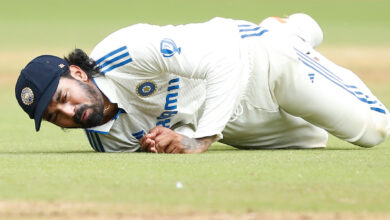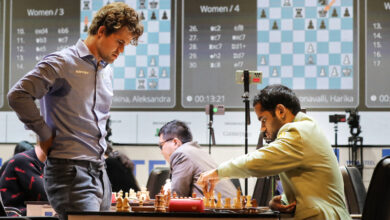Shubman Gill, Shreyas Iyer and Yashasvi Jaiswal: they came, they saw, they combusted in South Africa | Cricket News

South Africa intimidates batsmen. The bounce frightens them; worse when invariable bounce kicks in. The pace harries them; if the surface does not offer, the pacemen would. The sideways movement torments them, when it does not swing, it would inevitably seam. Nullifying even one of the devils is arduous enough, a combination of all three would make batting an ordeal of fire for even high-grade batters. In case none of the elements conspire, the country’s ever-stocked stable of thoroughbred pacemen would wreak havoc and misery.Hory offers lessons. Only one overseas batsman has managed five hundreds ever in the country. That is Sachin Tendulkar. The next on the l is Wally Hammond, with four. Several of the greats from the subcontinent have left these shores, crushed and stung. Rahul Dravid, that great condition-transcending technician, averages 29.71; the Pakani virtuoso Inzamam-ul-Haq fared slightly better, at 31.78.
Batches of batsmen from the subcontinent with brimming self-belief have returned home with crushed morale. The latest band of India’s youngsters too realised the bitter truth in three humiliating days in Centurion. Between them, the torchbearers of Indian batting in the years to come—Yashasvi Jaiswal, Shubman Gill and Shreyas Iyer—managed only 87 runs between them. and survived just 157 balls. That is 36 overs and a ball, that is four overs short of a full session of Test match cricket, that is just three more runs than South Africa’s number 7, Marco Jansen, strung up without getting out.
Sachin Tendulkar after scoring his 50th ton in South Africa. (Reuters)
At first sight, you could empathize with their inexperience. The subsequents viewing would tell a different story. It was slackness and not inadequate playing time that fashioned both of Jaiswal’s dismissals In the first innings, the 22-year -old threw away a composed start with a loose drive, seized perhaps the delusion that he is settled enough to be not devoured a fundamental folly. The ball was pitched up, and was wide of the stumps. In the subcontinent, he could have driven with eyes blindfolded. But this was South Africa, and the most venomous 22-yard species. The ball swung a fraction to elude the sweet-spot of his bat. The front-foot was nowhere near the pitch of the ball, his hands were hard and heavy and the balance was off-kilter. This was not merely inexperience, but glowing slackness. Even without the lateral movement, such a reckless stroke would have captured his wicket on most surfaces
Doziness cost him in the second innings. He left the ball on length, the decision to shoulder arms was sensible. Execution, though, was lazy. He has seen balls climb, he would have noticed how competent batsmen leave. They lift their hands like calling out someone from a dance, at a full upward stretch, or slide the bat away from the line of the ball, like the home-grown batsmen do, or sway their body away. Jaiswal’s leave was feeble and confused—South Africa is the last destination for half measures, whether playing a ball or not. The ball climbed and brushed the underside of his right-hand glove. A soft dismissal so to speak, but one that told hard truths.
Instincts undid Gill, the mantle-bearer of India’s batting school in the post-Kohli era. A ball darting into the hips would light up the eyes of most Asian batsmen. They could work it off their hips, glide it past fine-leg, or depending on the height, flick or pull. But on bouncy tracks, it could lead to a strangle, and such temptations are intemperances. He could not res feeling the ball and ended up gloving to the wicket-keeper on the leg-side. Yet another soft dismissals, but one down to the batsman’s utter naivety, unbecoming of someone who has featured in 19 Tests. His second-innings dismissal—bowled when driving a full ball—posed serious questions on his technique, chiefly his judgment of lengths and his weight transfer.
Skilled though he is, his travails overseas are piling on. Wobbles in England (where he averages 14 in six innings) , struggles in West Indies (22 in 3 innings), labours against the moving, the future of Indian batting does not seem as bright as it once shone. Certainly, he is just 24, and there is time yet to fix the cracks. He could still inherit the Sunil Gavaskar-Tendulkar-Kohli mantle. But at this stage of his career, he is some dance away from their scaling lofty levels. 35 innings, Kohli already had hundreds in Australia and South Africa; Tendulkar in England, Australia and South Africa. His short-form numbers are incredible, but has yet to crack the Test code, despite the gifts he possesses.
Iyer too has the virtues to be a middle-order virtuoso. He can straddle the roles of an enforcer, counterpuncher, and accumulator. Yet, he cannot cut the frills, res the impulse to flay every ball to the fence, or evolve into a no nonsense batsman he is capable of being. Too often, he tried too hard for the boundaries. Such an approach could be profitable in Asia but not in South Africa or England. Both innings, it was not his supposed enemy, the short ball, that nailed him. But the full balls. Perhaps, it’s the subconscious fear of the short-ball on midriff that has tied his feet on the crease, swamped his mind, manifesting in a feeble front-foot press. Quality bowlers would scavenge on such fallibilities of mind and technique, stymying his progress in this format.
It’s often a knee-jerk reaction to accuse white-ball cricket for the failing of batsmen, especially those bred in the T20-age, in Tests. In the case of the trio, such an argument is valid. Their temperament was akin to the orthodox ODI batting formula —exercise discretion at the start and then expand the canvas. In South Africa, a batsman seldom acquires pure mastery over conditions, or situations. Jaiswal, Gill, and Iyer would surely have learned their lessons from Centurion. Lest, South Africa would continue to intimidate, and even swallow the careers.







